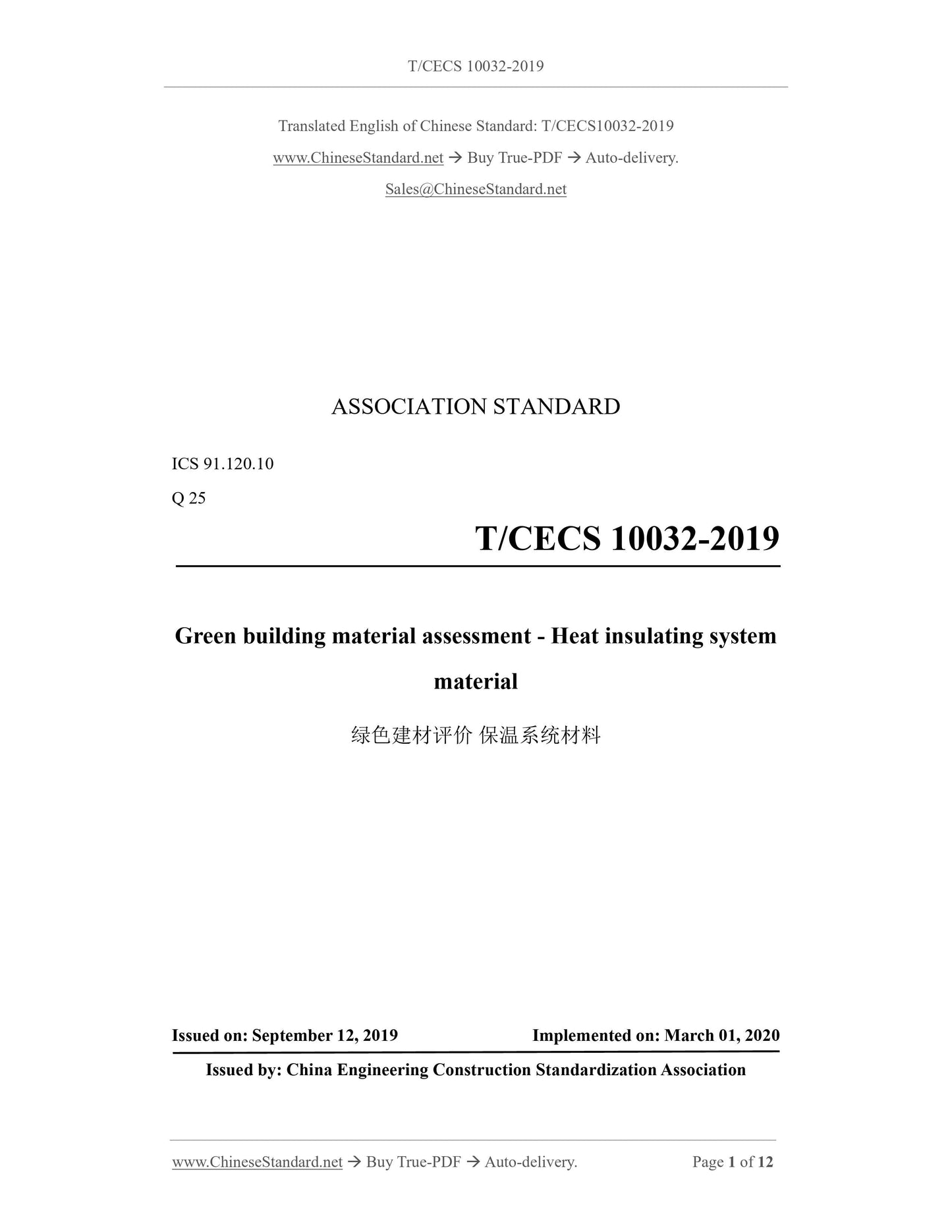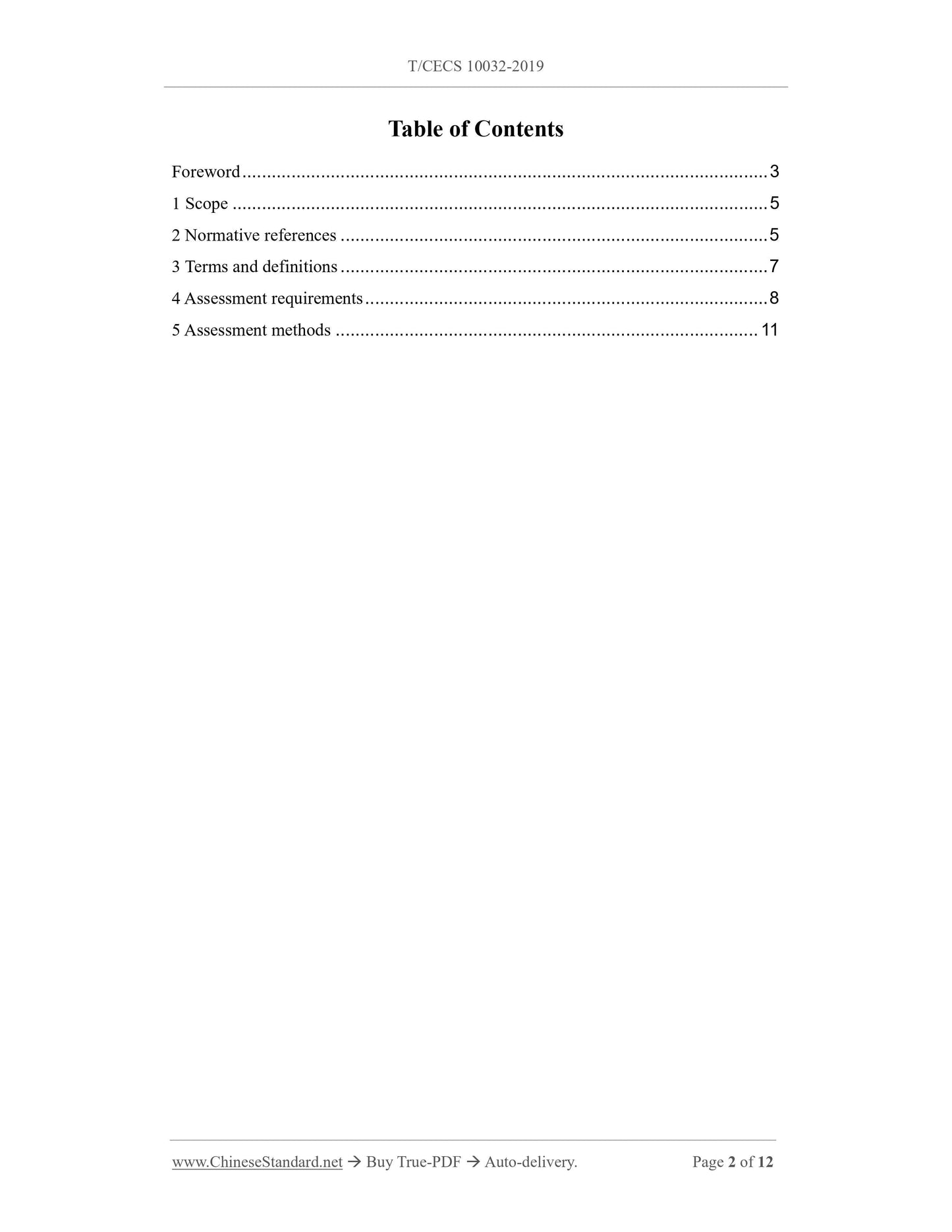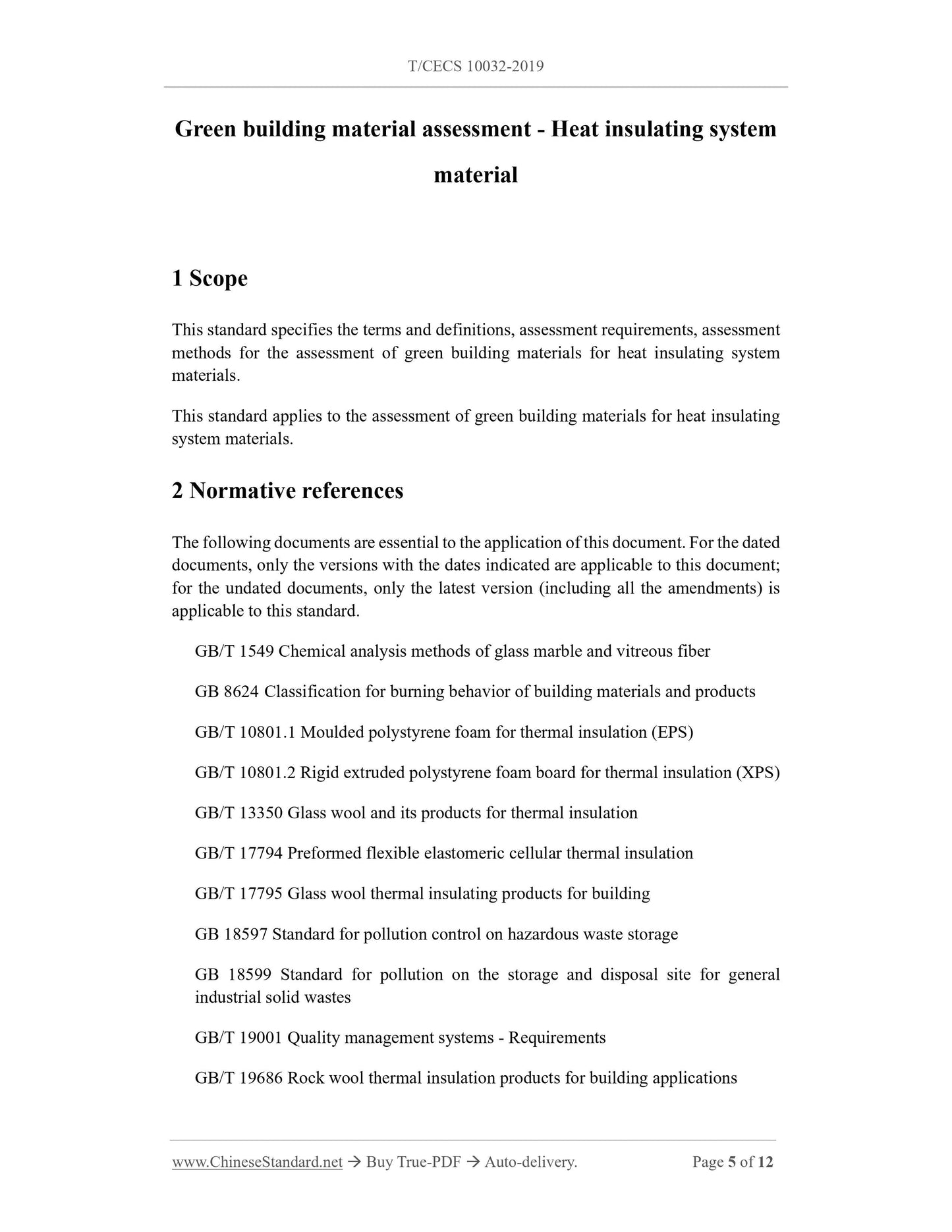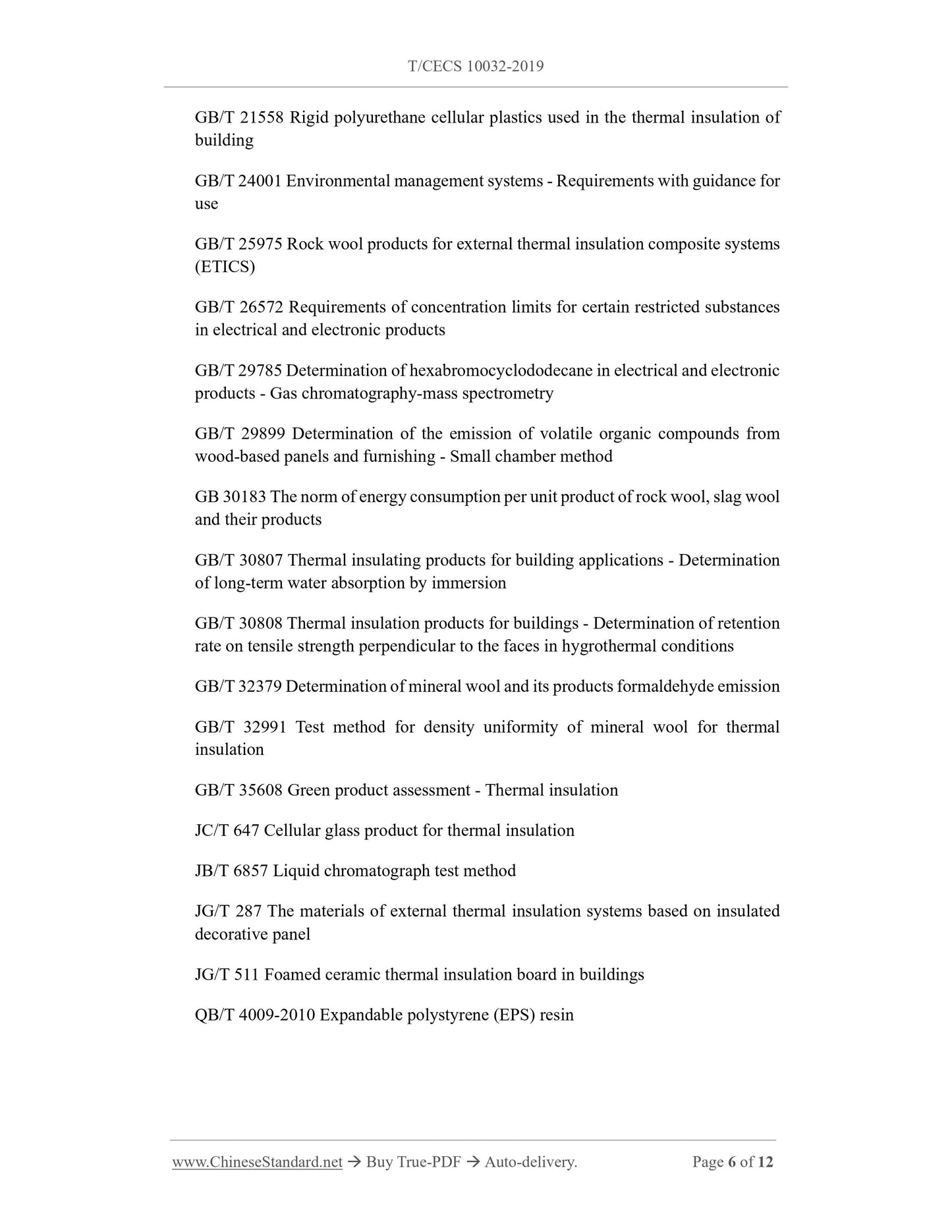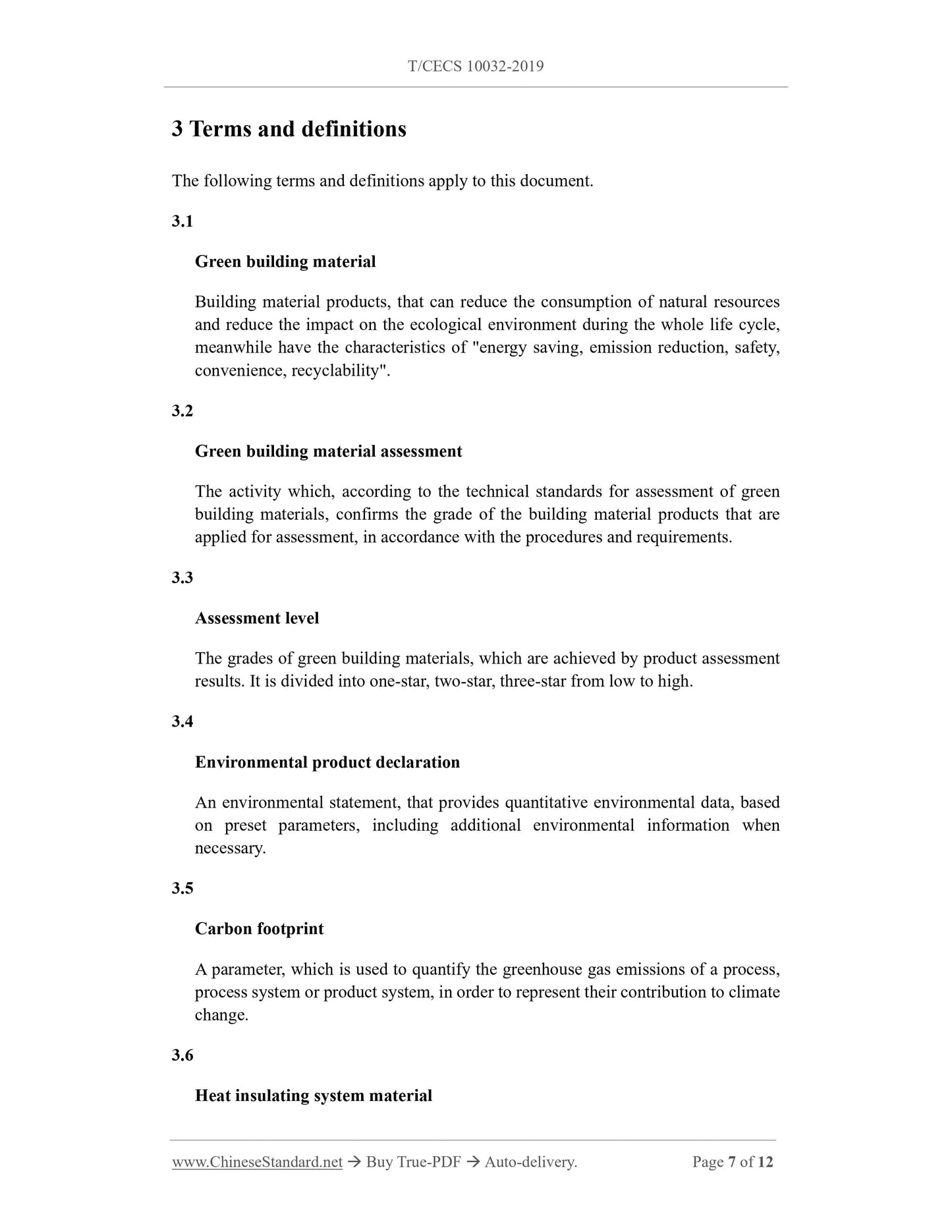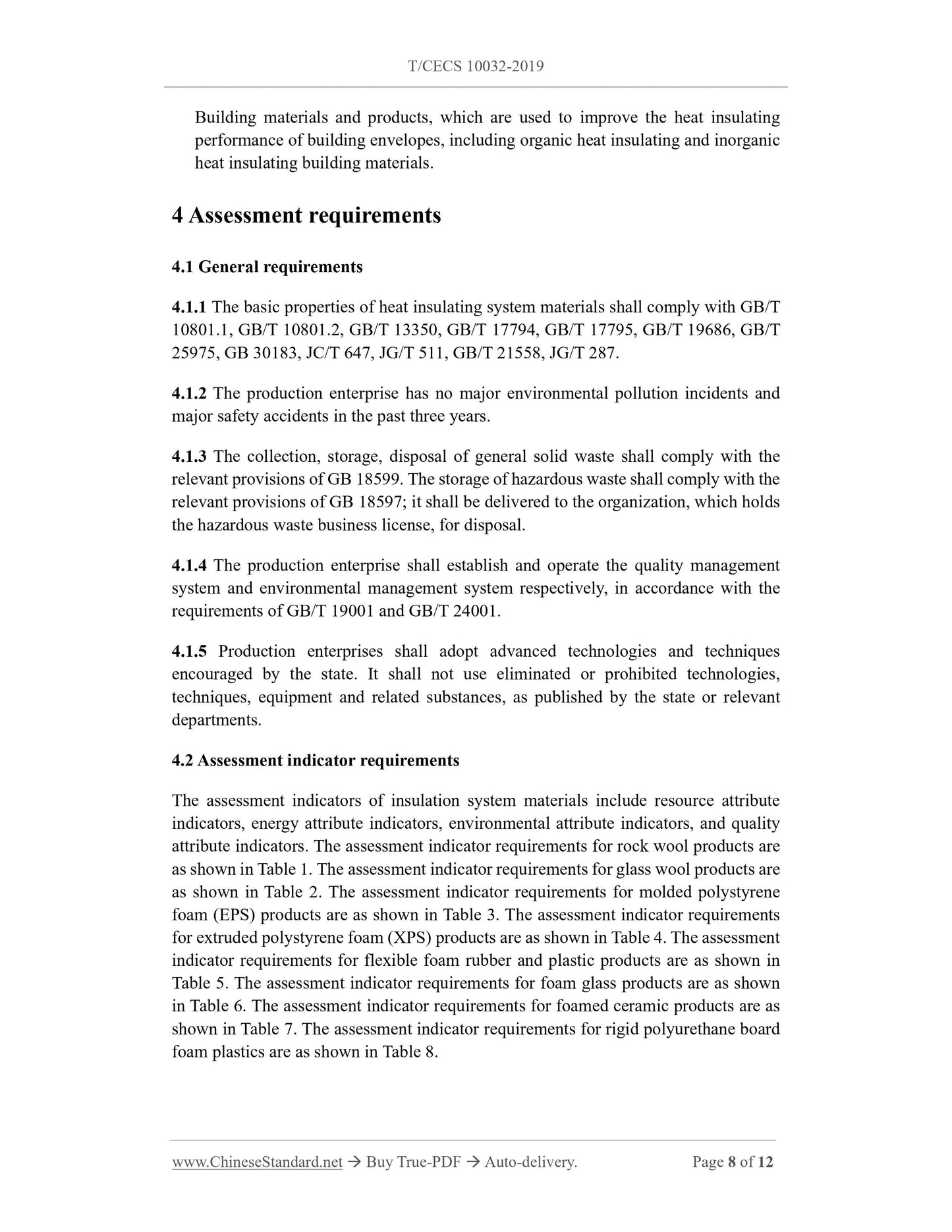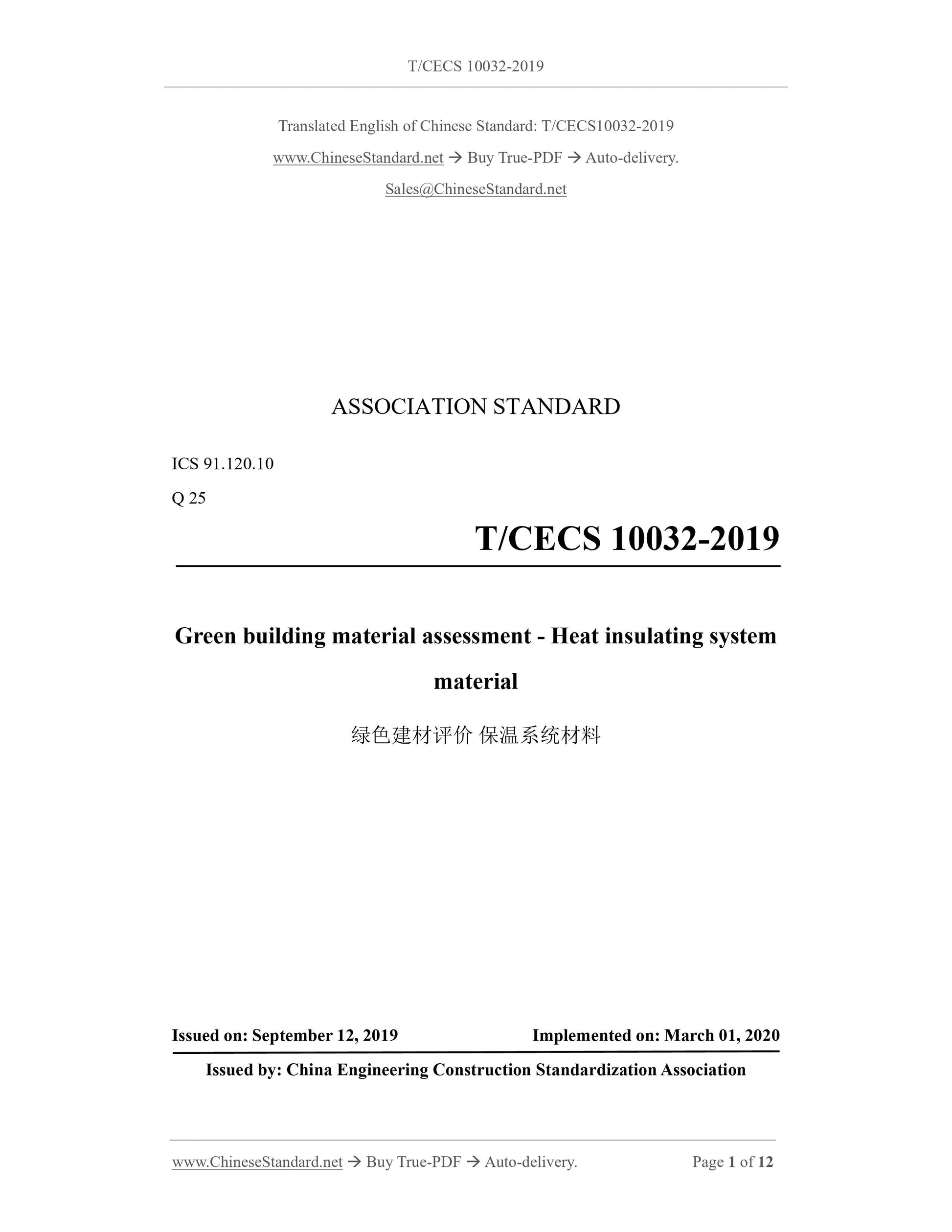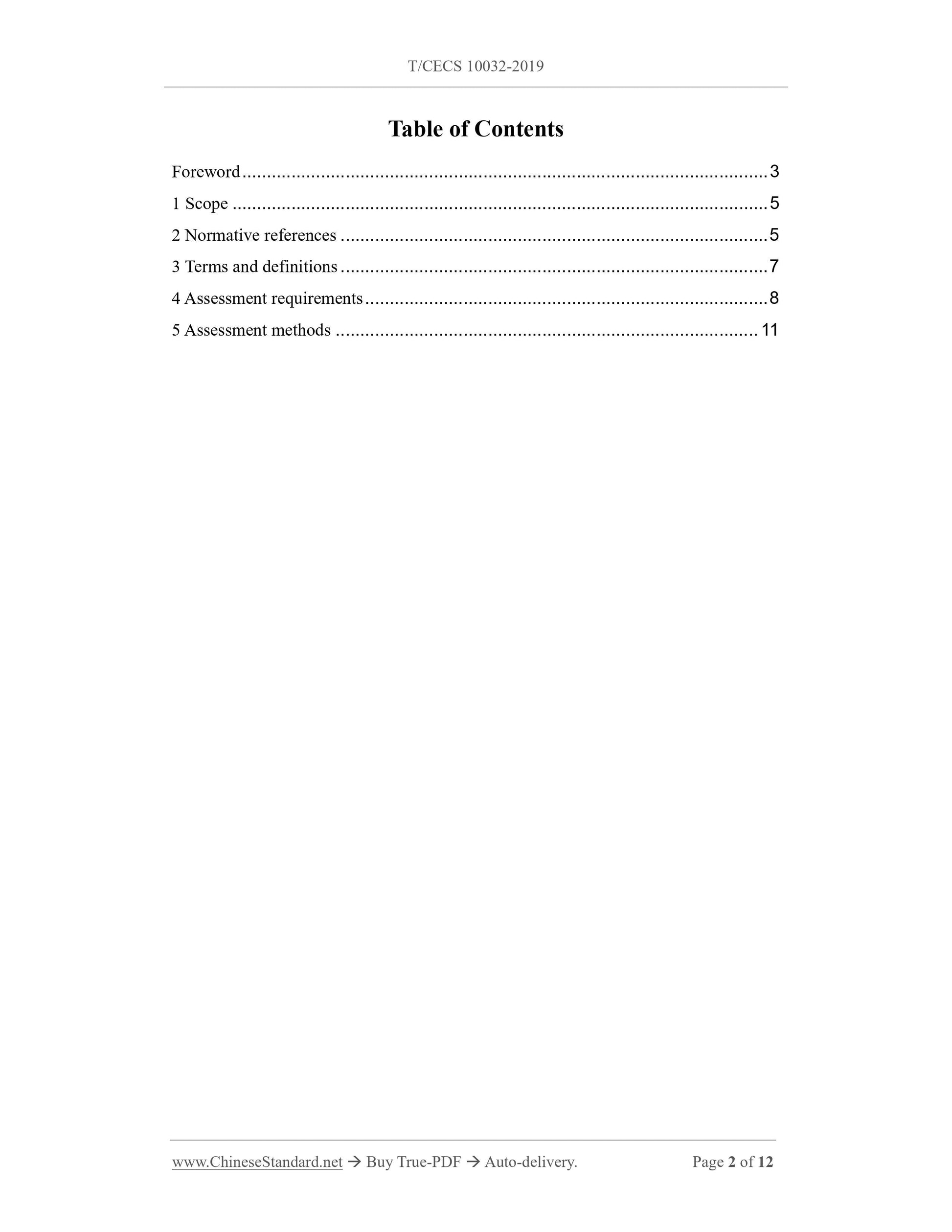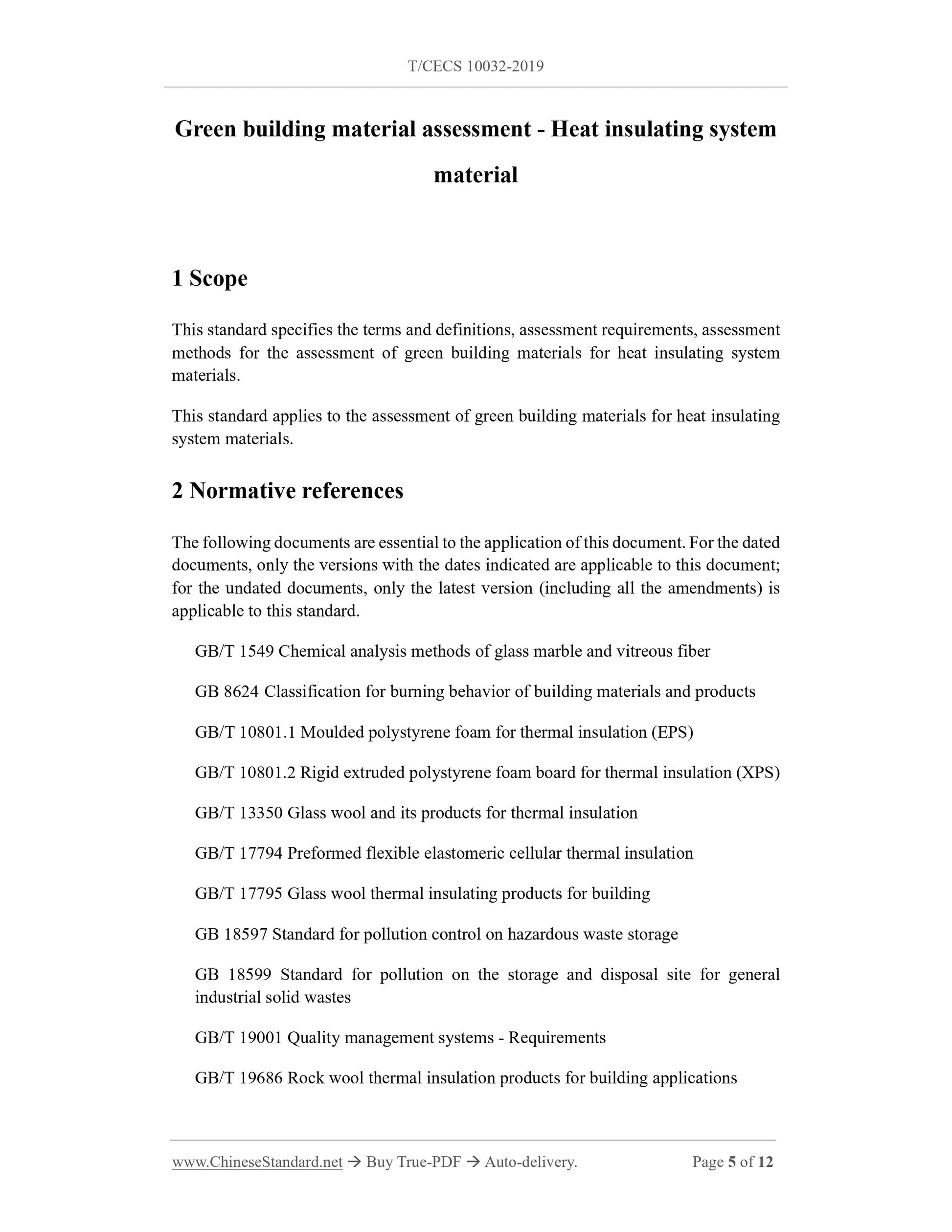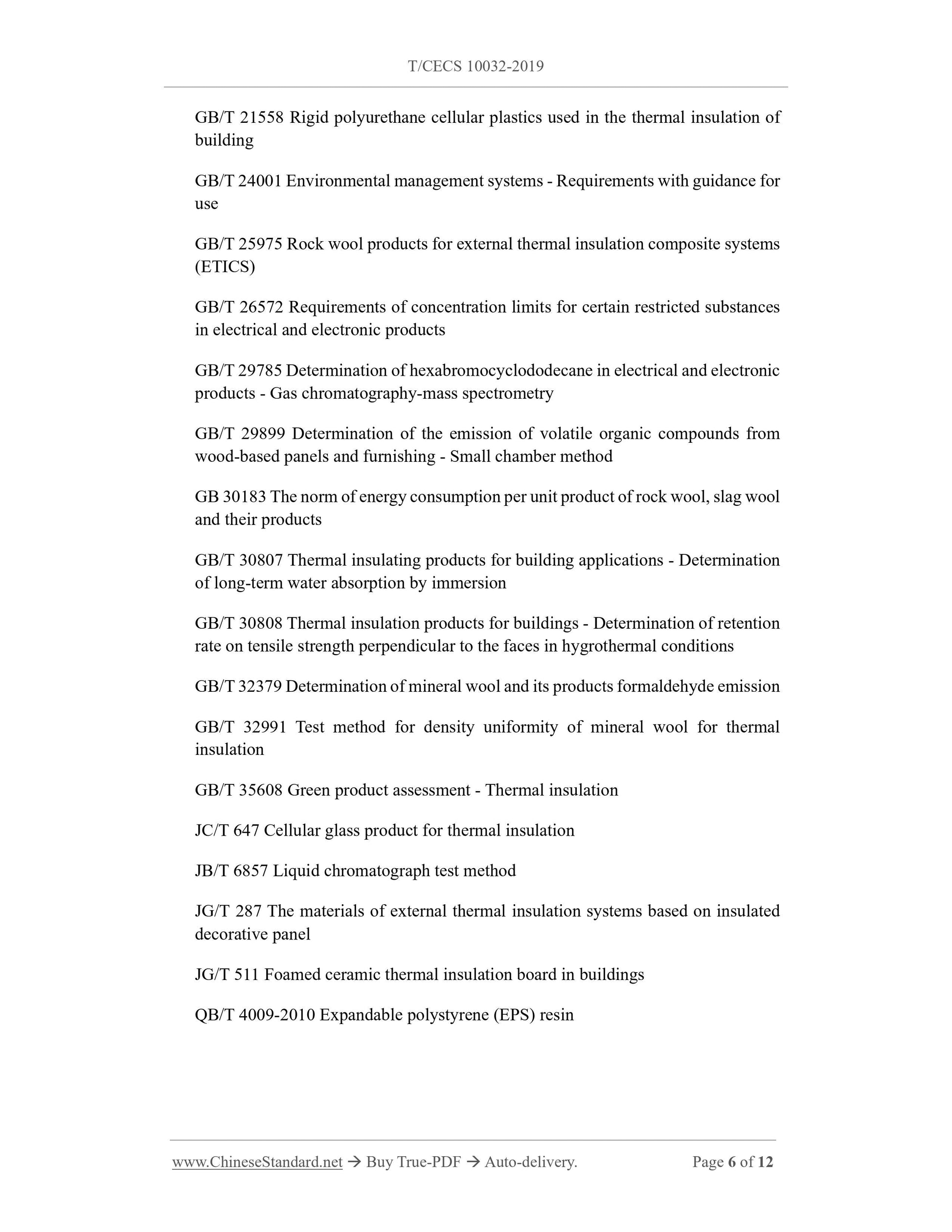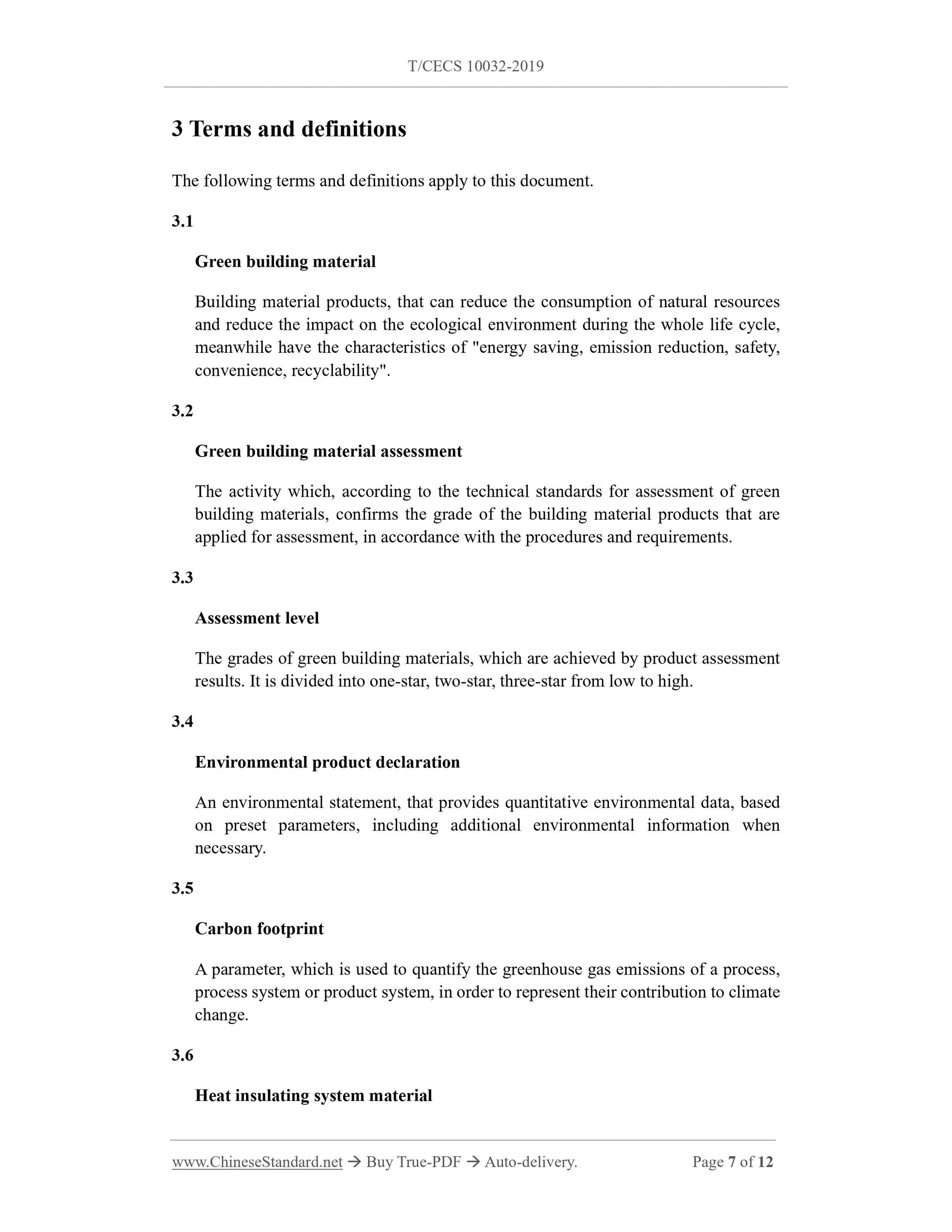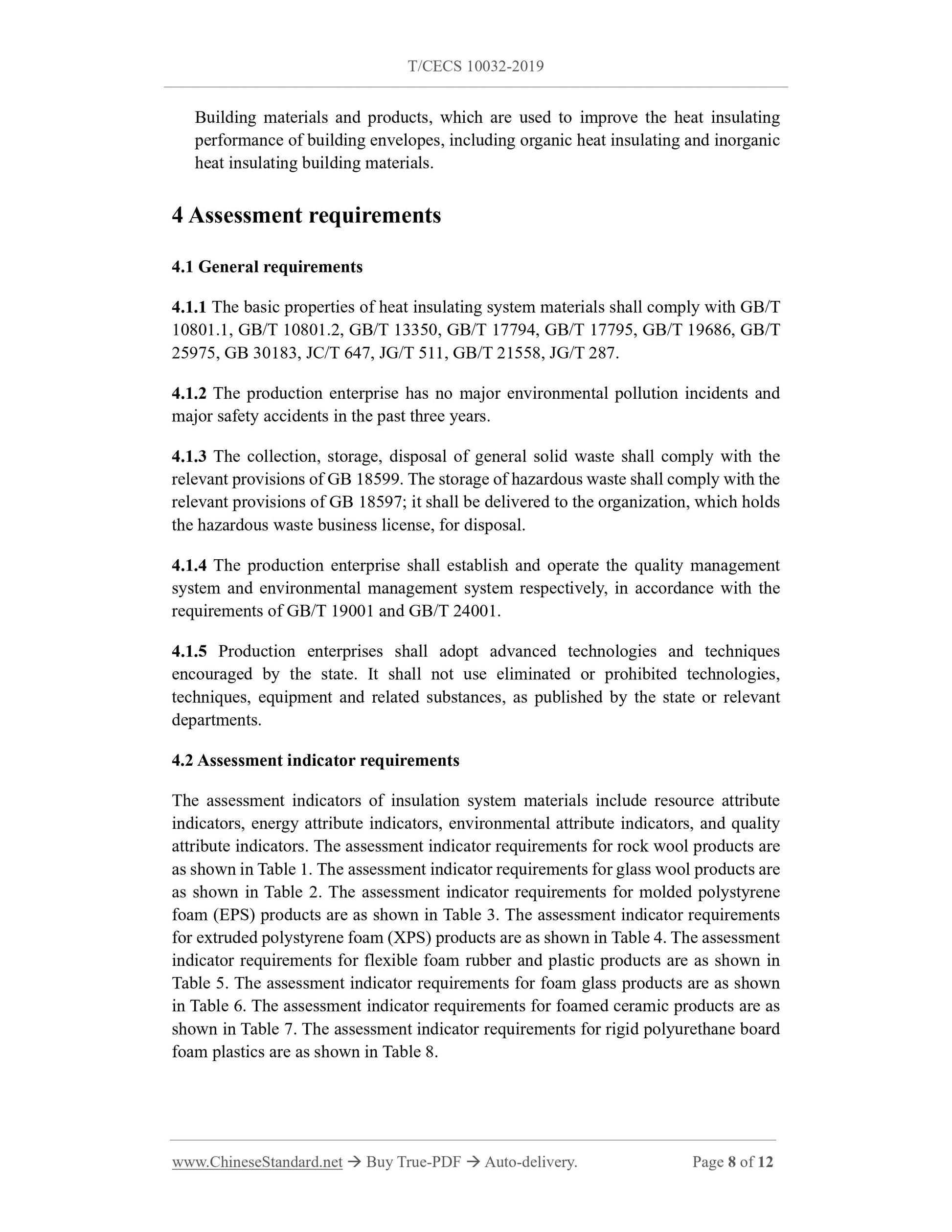1
/
of
6
www.ChineseStandard.us -- Field Test Asia Pte. Ltd.
TCECS10032-2019 English PDF
TCECS10032-2019 English PDF
Regular price
$340.00
Regular price
Sale price
$340.00
Unit price
/
per
Shipping calculated at checkout.
Couldn't load pickup availability
TCECS10032-2019: Green building material assessment - Heat insulating system material
Delivery: 9 seconds. Download (and Email) true-PDF + Invoice.Get Quotation: Click TCECS10032-2019 (Self-service in 1-minute)
Newer / historical versions: TCECS10032-2019
Preview True-PDF
Scope
This standard specifies the terms and definitions, assessment requirements, assessmentmethods for the assessment of green building materials for heat insulating system
materials.
This standard applies to the assessment of green building materials for heat insulating
system materials.
Share
